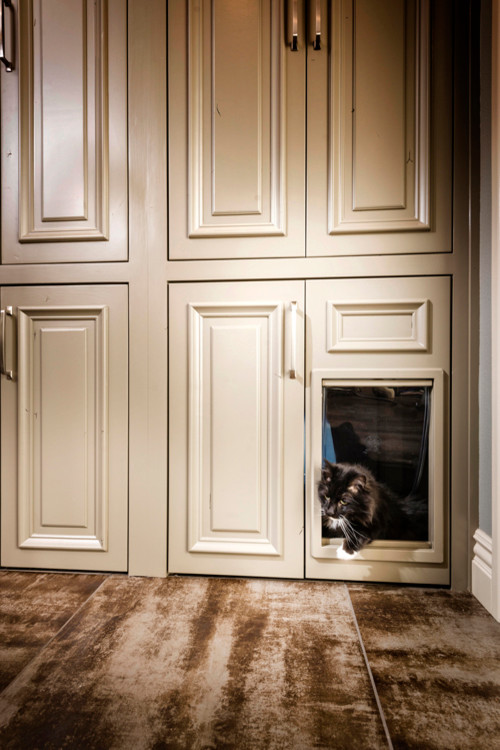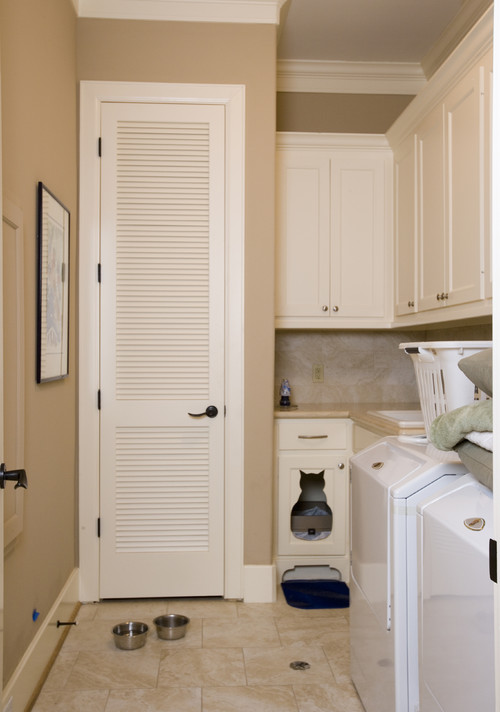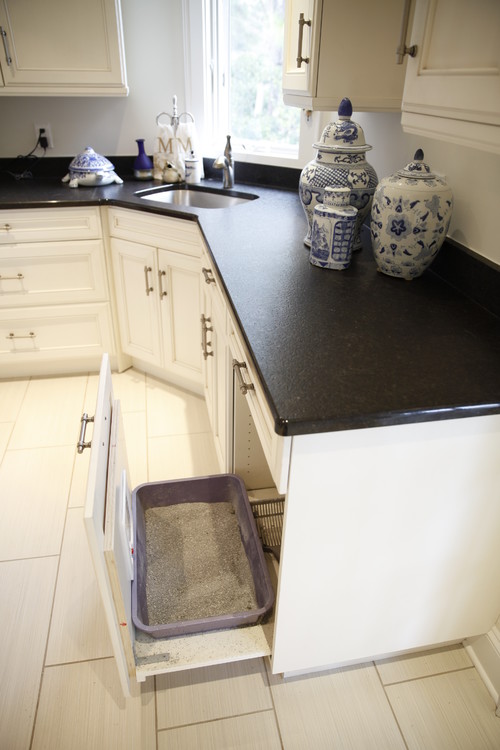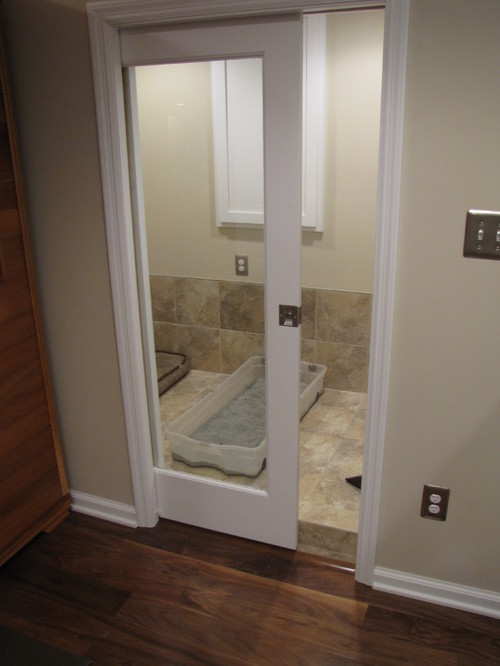×
Email
HOW CAN WE HELP?
6a - 7p Monday - Friday
6a - 2p Saturday
Mountain Time
PHONE
1-877-738-7237
FAX
1-866-777-1434
MAIL
Pets Best
2323 S Vista Ave. Ste. 100
Boise, ID 83705
My Question
First Name
Last Name
Policy (optional)
Phone
Best Day
Best Time
Click here to text customer care
- Pet Insurance
- Blog
- 8 Design Tips to Hide Your Cat's Litter Box

Finding a place for the cat's litter box is part of cohabitating with a feline friend, but it doesn't have to be done at the expense of good design.
Keeping the box out in the open makes using the toilet easy for kitty but is less than ideal for everyone else in the house. But is it a good idea to conceal a cat's box in a cabinet or closet? Opinions vary.
Cats like a litter box in a quiet spot with an escape route -- where they can see people or other animals and not feel trapped, according to the ASPCA. Jackson Galaxy, author and host of Animal Planet's My Cat From Hell, on the other hand, says in the Litter Box 101 section of his website that the cat box must be in "socially important" areas of the home -- in other words, right where you can see it, not hidden away.
Experts may disagree on the best place to locate the litter box, but one thing most agree on is that it must be in a spot that can be easily accessed by the cat to use and humans to clean. Not keeping a litter box clean is asking for trouble -- including having your furniture used as a toilet.
Here's a look at how some designers and homeowners have worked litter boxes into their decor.
Inside a Cabinet
1. A standard magnetic pet door flap is inset in the handsome panel of a litter box cabinet in this laundry room of a Springfield, Missouri, home. Designer Nathan Taylor of Obelisk Home notes that the porcelain tile floor of the laundry room continues into the litter box area. There's no external ventilation, but Taylor says the "air mass of the double cabinet provides enough air."
On the other side of the cabinet is the garage. A small door on that side of the cabinet allows owners easy access to the litter box to clean it from inside the garage.
For homeowners interested in taking on a project like this, Taylor says it could be done in an existing cabinet, similar to installing a cat door in a regular door. "It may require some interior support to attach the back of the cat door," he says.
2. In this laundry room in Houston, designers at Brickmoon Design created a template that their trim carpenter followed to cut a cat shape on the cabinet door leading to the litter box.
In a Drawer
3. The door in this Wilmington, North Carolina, laundry room was custom-made for the cat. There's an entry hole in front, and the cabinet pulls open for cleaning the box. A back door nearby helps with ventilation, designer Alice Evans of Dynamic Kitchen and Interiors says.
4. Here's another drawer that accesses a litter box through a mouse-hole-shaped entry. This one's in the mudroom of a custom home in Texas.
Behind a Wall
5. This attractive accessway to a litter box was incorporated into the whole-house remodel of a brick Colonial in Lincoln, Massachusetts. Molding above the baseboard frames the entryway through which the cat accesses a tunnel to the basement, where the litter box is.
This keeps the homeowners from having to leave the basement door open. Keep in mind when taking on a project like this that it's probably best done by a carpenter or skilled handyman, because cutting through a wall is serious business and requires the right tools and skills.
Under Stairs
6. Here's a clever through-the-wall design that keeps the litter box and food bowls out of sight behind a dining room wall. During their Paris apartment's renovation, the architect-designers of A+B Kasha Designs discovered their new puppy was a bit too interested in the cat's food and litter box, Alon Kasha says. So they incorporated the cat space under the staircase, building a door with a hole in it for their cat, named Pounce, to crawl through, and a perch for him to jump onto to get there.
Pounce's routine goes like this: He jumps up onto the ledge, goes through the hole, onto the food ledge inside, then walks on top of the litter box to the back, where he jumps down and goes into his box.
The deeper ledge inside holds his water and food bowls. "All we do is open the door to restock," Kasha says. There's a vent to the outside back wall at the end of the space, which is about 5 feet deep. "To clean the litter, we open the door and pull out the litter box. It all works great. No odors," Kasha says.
Under a Bench
7. Designer Tami Holsten of Bear Trap Design got super creative when custom-building this litter box hidden in a bench in a laundry room in West St. Paul, Minnesota (this photo and next).
"The space is limited so I needed to be creative and find the ultimate litter box hideaway for their two cats, Bud and Stella," Holsten says. The bench seat lifts for easy access to the box, which the cats enjoy for its privacy, she says.
As a surprise for her clients, Holsten took the bench's front panel with the mouse hole cutout to a local artist, who illustrated it with a mouse zooming on an orange motorcycle, with the exhaust spelling out the name of one of the homeowners, who drives a motorcycle, loves the color orange and is "king of the laundry room," Holsten says.
Related: Decorate a Pet's Space With Wall Decals
There's no need for extra ventilation and the system "works like a charm," Holsten says.
In a Dedicated Room
8. Sure, there are plenty of ways to tuck away the cat box in a cabinet or closet, but why not put it in its own room? That's what the designers from Buckeye Basements did in this Columbus, Ohio, remodel. The cat boxes sit behind a handsome glass pocket door. An exhaust fan activated by a light switch helps with ventilation and a shower drain pan makes cleanup easier.
This article is part of a collaboration between Pets Best pet health insurance and Houzz. We’ve teamed up to provide you this series of articles focused on pets and homes. Learn more about pet insurance at petsbest.com.






